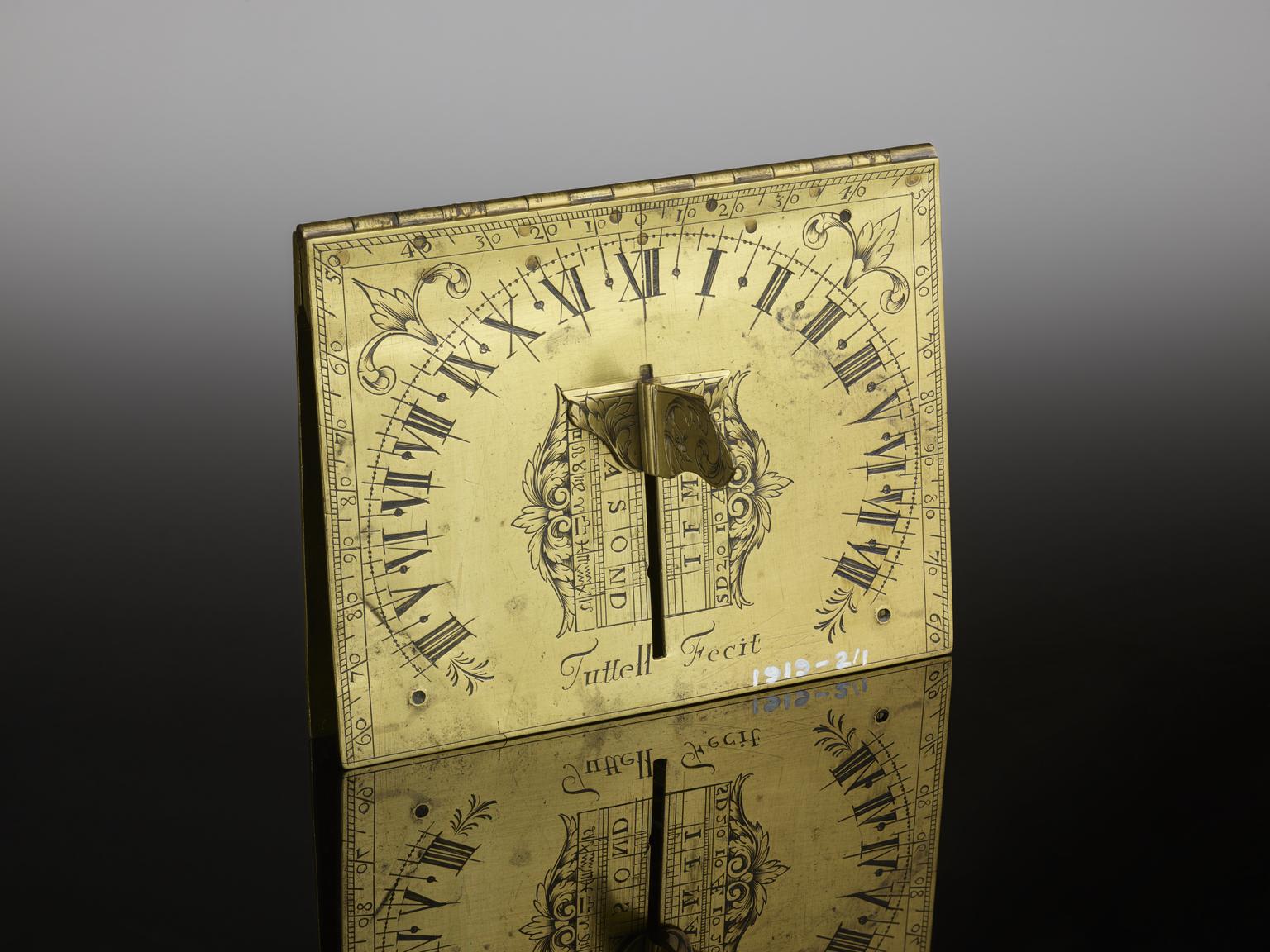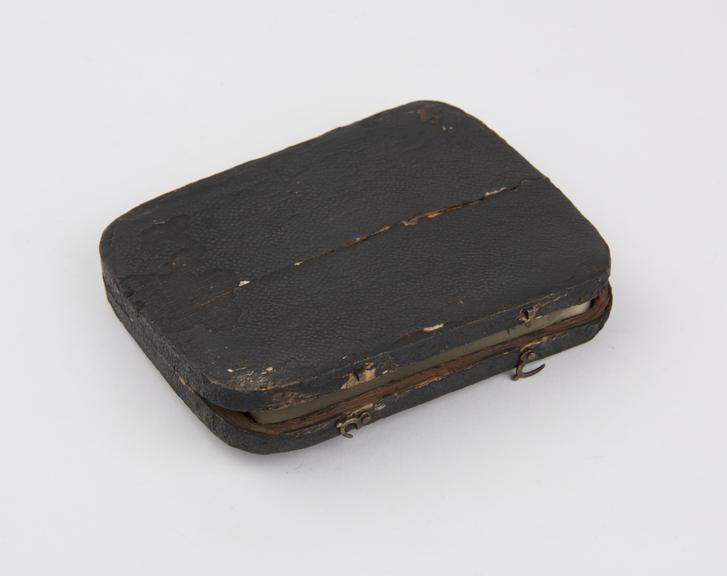
Analemmatic sundial made by Thomas Tuttell
Analemmatic sundial made by Thomas Tuttell, 1674-1702, London, England, with imperfect gnomon.
An analemmatic sundial is a type of horizontal sundial which is eliptical in shape and has a movable vertical gnomon (shadow casting apparatus). Moving the gnomon enables the sundial to be set and thus more accurately used during different seasons.
Sundials are intended to be used facing north to ensure the position of the sun is correct for reading the time, which is why this example features a compass. This sundial is marked with sunlight hours from 04:00 to 20:00 in Roman numerals and is based on the Julian calendar, which was the calendar style in use in England when this dial was made.
Thomas Tuttell was a mathematical instrument maker, based in London. He ran a successful business and was appointed instrument maker and hydrographer to the King in 1702.
- Measurements:
-
overall: 40 mm x 150 mm x 100 mm,
- Materials:
- brass (copper, zinc alloy)
- Object Number:
- 1919-2/1
- type:
- sundial











